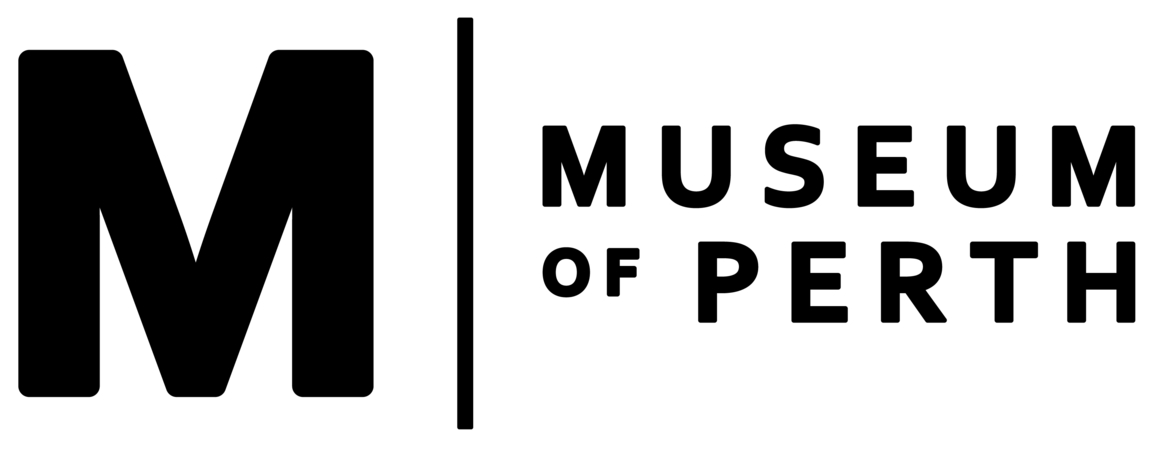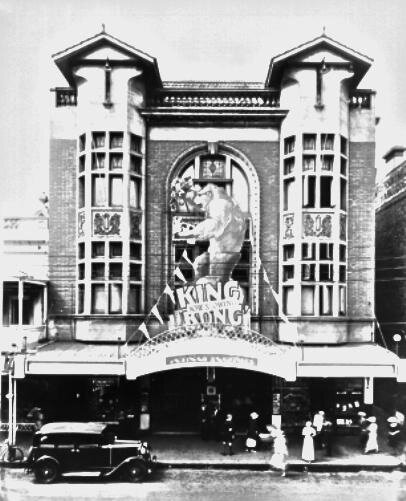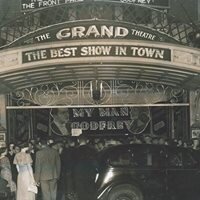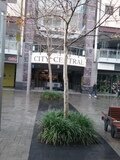GRAND THEATRE 164-168 MURRAY STREET PERTH (1916-1990)
The Grand Theatre was designed in the Edwardian style by architect Richard Joseph Dennehy at a cost of £20,000, (just short of $2m today) for entrepreneur Thomas Coombe. Construction began in January 1915 and was officially opened on 20 September 1916 by Mr Frank Rea, Lord Mayor of Perth, with a charity fundraising gala for wounded soldiers.
This magnificent building consisted of seating for 1300; 1000 in the stalls and 300 in dress circle seats. The main entrance fronted Murray Street, with a second entrance facing Barrack Street, and led to a 15.2m (50 ft) wide marble-tiled and mirror-lined vestibule with a large marble staircase. The auditorium, with a 7.3m by 5.5m screen, was unique in Western Australia in that it had a windlass-operated sliding roof, and also removable shutters on the side walls to allow for cross ventilation.
Although an independent operation owned by Thomas Coombe Snr the site was sold to Thomas Melrose (later Sir Thomas) & James Lean Coombe and became a part of the Union Theatres chain 1929. Management rendered its orchestra redundant when it was wired for sound, screening its first ‘talkie’, The Midnight Taxi, on 2 September 1929. On 29 April 1932 it became an all-British house, showcasing the most prestigious British films.
During the height of the Depression in 1929 the theatre was sold for £82,000 (around $6m today) to Town and Suburban Properties Ltd, and leased back to be run as apart of the Union Theatre chain. By early-1932 Union Theatres had fallen behind in their rent. The bailiffs were called in August 1932 and their tenancy ceased.
Town and Suburban Properties Ltd was owned by four families; the Stiles, Taylor, Davenport and Vivian families. James Stiles, due to his experience in film exhibition, became the spokesperson for the group and convinced the company to form the Grand Theatre Co; specifically to manage the Grand Theatre as a functioning cinema. Under his successful guidance the company went on to lease other theatres and became even larger that the Eastern States-based chains Hoyts and Union Theatres.
There were two major reconstructions; the first in 1938, the second in 1959:
“The supporting pillars in the stalls have been taken away, and throughout the theatre provision has been made for the comfort of patrons by considerably widening the space between the rows of seats. What were previously two small landings upstairs have been joined together and enlarged to make an attractive smoking lounge. Extensive alterations have been made to the walls which have been re-painted in pastel shades, predominantly green. A feature of the new theatre is the lighting system, which is done with neon lights. The Grand is the first theatre in Australia entirely illuminated by neon lights, and the effect is most pleasing.
The West Australian, 17 December 1938
By 1959 the Grand Theatre Co, evolved into City Theatres Pty Ltd, and the second of the extensive renovations completed.
“The Grand Theatre, home of British pictures in Western Australia, has been modernised and refurbished at a cost of £15,000 to make it one of the attractive showcases of the West Australian capital. In the modernisation scheme planned by architects Hobbs, Winning and Leighton a new lounge foyer has been created. Lounge foyer is attractively carpeted and painted, with decor set off by the wood panelling of the walls. Seating has been provided and there is also a modern and well-stocked candy and soft drink bar. A cooling system operating on an air filter system has also been installed, while a new suspended ceiling in the theatre lends a modern touch to the building and has improved sound throughout the theatre. Similar style ceiling has been fitted in the lounge foyer and in the theatre's entrance lobby”.
Film Weekly, 15 January 1959
Due to these two renovations the theatre was left with seating for only 721 but a growing trend for smaller, more intimate cinemas enabled the Grand to keep going in its later years; particularly after it was fully air-conditioned in 1961.
In 1973 a consortium consisting of TVW Ltd, Swan Television and Michael Edgley International Ltd took over City Theatres Pty Ltd and by August 1978 TVW Ltd had bought out the other partners. Management was under Arthur Stiles, nephew of James Stiles.
The theatre, in 1978 now worth $1.8m (around $9m today) - not for the building, which was outmoded, but for its prime position in the central city. It finally closed on 6 November 1980, the day the company opened Cinema City which was situated on the corner Murray and Barrack Streets. The foyer and auditorium spaces were let for restaurants and fast food outlets until the old Grand was finally demolished in March 1990.
Today, a building complex called “City Central” has been constructed which has several leased businesses, the main being Woolworths Supermarket.
By Shannon Lovelady
Story from Demolished Icons of Perth




